When it comes to mastering the game of pickleball, a common misconception among beginners and even some intermediate players is to focus solely on the paddle’s movement.
While it’s undeniably essential, it’s only half the story.
The often-overlooked but equally vital aspect is footwork — a fundamental element that can drastically enhance your overall performance, speed, agility, and accuracy on the pickleball court.
In this article, we aim to shed light on the significance of how to master footwork techniques in pickleball, elucidating useful techniques, drills, and tips to help you navigate the court like a pro.
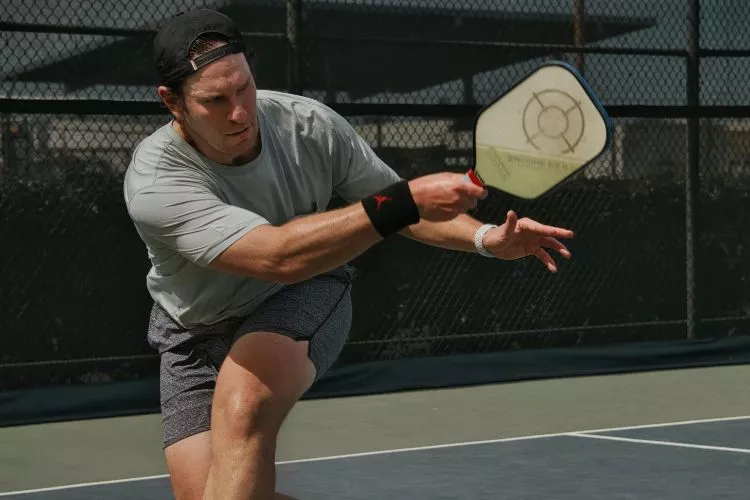
Prepare to elevate your game to all-new heights, exemplifying efficient footwork often advanced by seasoned pickleball players while also ensuring a safe and injury-free playing experience.
How to Master Footwork Techniques in Pickleball?
Pickleball, a popular racket sport, combines elements of badminton, tennis, and table tennis.
It’s essential to develop strong footwork skills to excel at pickleball, as it significantly impacts your speed, balance, and accuracy.
This comprehensive guide will walk you through key footwork techniques and tips to master the game and become an agile and confident pickleball player.
The Importance of Footwork
Footwork lays the foundation for a successful pickleball game. Good footwork enables you to:
- Move swiftly across the court with minimal effort.
- Position yourself correctly, allowing for optimal shot selection.
- Improve balance and body control for striking the ball effectively.
- Reduce the risk of injuries by avoiding awkward movements.
Core Techniques
Here are some fundamental footwork techniques to upgrade your game:
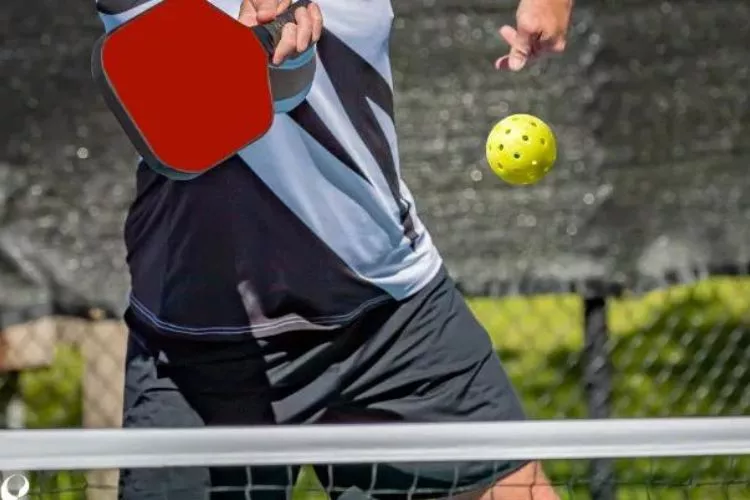
Split-step
A split-step is a short hop executed just before your opponent strikes the ball. It puts you in a balanced and ready position to react quickly to their shot.
- Start by positioning yourself in the ready stance – feet shoulder-width apart and knees slightly bent.
- As your opponent prepares to hit the ball, perform a small hop, landing on the balls of your feet.
- Keep your weight balanced and be prepared to move in any direction.
Side-shuffle
A side-shuffle allows you to move laterally across the court while maintaining your ready stance. This enhances court coverage and helps you adjust quickly to incoming shots.
- Begin in the ready stance, keeping your weight on the balls of your feet.
- Push off with one foot and shuffle sideways, bringing the other foot closer.
- Maintain a low center of gravity and your paddle at chest-level, ready to hit the ball.
Crossover step
A crossover step is a quick and efficient way to cover larger distances on the court.
- Initiate the movement with a side-shuffle.
- While pushing off with your back foot, cross your front foot over it.
- Move in a diagonal motion, maintaining your balance, and be prepared to perform a split-step to react to the next shot.
Drills to Master Footwork
Training drills help develop muscle memory and increase agility on the court. Here are four drills for improved footwork:
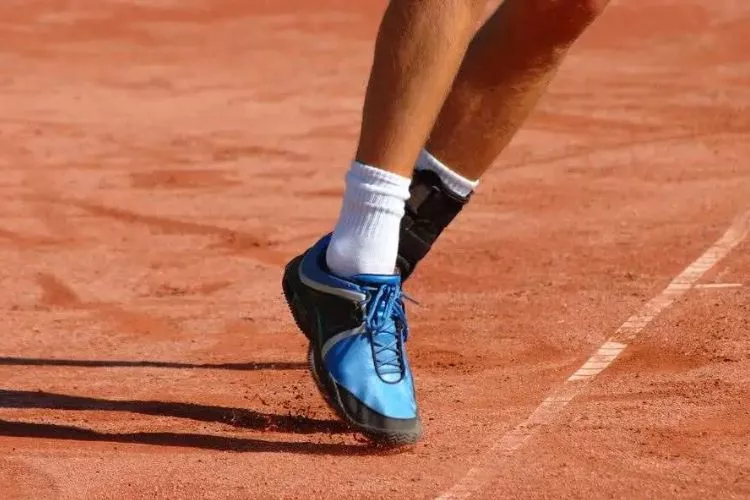
- Ladder drills: Using an agility ladder, practice different patterns like single-step, two-step, or lateral movements, focusing on maintaining proper form and balance.
- Shadow drills: Mimic pickleball movements on the court without hitting a ball. This allows you to concentrate on footwork, body positioning, and court coverage without the pressure of a game situation.
- Cone drills: Set up cones on the court and execute specific footwork patterns around them. This helps develop quick reaction times and directional changes.
- Ball toss drill: Have a partner toss pickleballs to random spots on the court and practice getting to the ball’s location quickly, maintaining proper form and ready stance.
Tips to Elevate Your Footwork
- Condition your body: Strengthen your legs, core, and cardiovascular capacity with regular exercise. Greater fitness and strength translate to better footwork on the court.
- Stay low and light on your feet: A low center of gravity provides better balance and quicker reactions. Being light on your feet makes it easier to change direction.
- Keep your eye on the ball: Tracking the ball helps anticipate its trajectory, allowing you to move into the optimal position for the next shot.
- Maintain continuous movement: Remaining in motion between shots keeps your muscles engaged and helps you stay in an athletic ready stance.
Incorporating these techniques, drills, and tips into your training regimen will help you develop the footwork needed to excel in pickleball.
Additionally, with improved footwork, you’ll enjoy enhanced performance, agility, and accuracy, making you a formidable opponent on the court.
Remember, patience and consistent practice are the keys to mastering footwork techniques. So, lace up your sneakers, grab your paddle, and start stepping toward pickleball mastery!
Selecting the Right Footwear for Pickleball
In sports like pickleball where agility, balance, and quick lateral movements are crucial, the importance of wearing the right footwear can’t be overstated.
Quality pickleball shoes can enhance your performance, provide needed stability, and most importantly, prevent potential injuries.
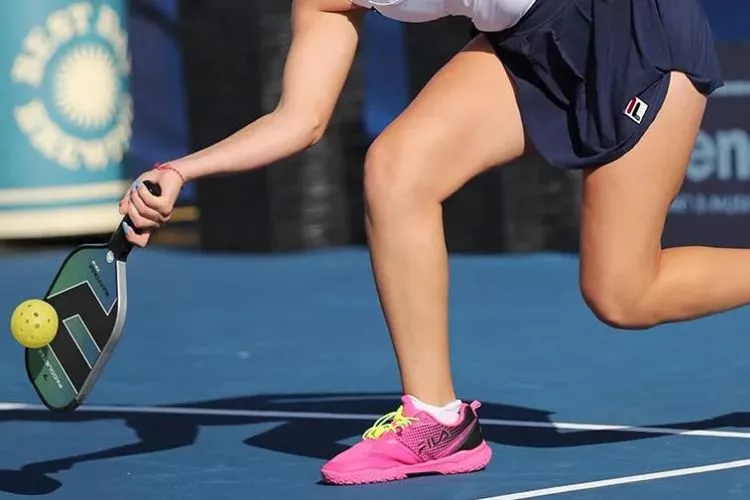
The Role of Appropriate Footwear in Optimal Footwork
Shoes specifically designed for pickleball play a significant role in facilitating optimal footwork on the court. These shoes possess unique features that promote efficiency, speed, comfort, and safety.
- Traction: Pickleball shoes have soles designed to grip the court surface, reducing the chances of slipping and helping players change directions swiftly.
- Stability: The shoes provide lateral support, crucial for the quick, side-to-side movements common in pickleball. This lateral support ensures stability and balance during gameplay.
- Comfort & Fit: An ideally fitted shoe that offers comfort contributes to better and faster footwork, allowing you to focus solely on your game.
- Shock Absorption: Good pickleball shoes have enhanced cushioning to lessen the impact on joints when moving around the court, reducing the risk of injuries.
Choosing the Right Pickleball Shoes
Here are some elements to consider while choosing the most suitable pickleball shoes:
- Assess Court Surface: The type of court you play on (indoor or outdoor) significantly impacts your choice of footwear. Shoes for indoor courts usually have gum soles for better grip, while outdoor shoes have harder rubber soles for durability on rough surfaces.
- Factor in Your Feet Characteristics: Everyone’s feet are different. Some players might have flat feet or high arches and could benefit from shoes that offer specific support. Therefore, knowing your foot type and buying shoes accordingly can improve comfort and performance.
- Prioritize Comfort and Fit: An incorrectly fitted shoe can not only hinder your game but also lead to blisters and injuries. Always try on shoes with the socks you intend to play in, and ensure there’s enough space for your toes to move slightly.
- Consider Durability: Pickleball involves lots of quick movements, which can wear out shoes quicker than usual. Look for shoes made of durable material that can withstand intense and frequent play.
Choose wisely, and you’ll find that the right footwear can positively transform your game by enabling superior footwork on the pickleball court.
Incorporating Footwork into Different Game Strategies
In pickleball, one of the key factors that determine success is the ability to adapt and execute various game strategies effectively.
Incorporating footwork techniques into your offensive and defensive strategies is crucial for achieving the best outcome on the court.
This section will discuss how specific footwork can complement the strategies employed in pickleball.
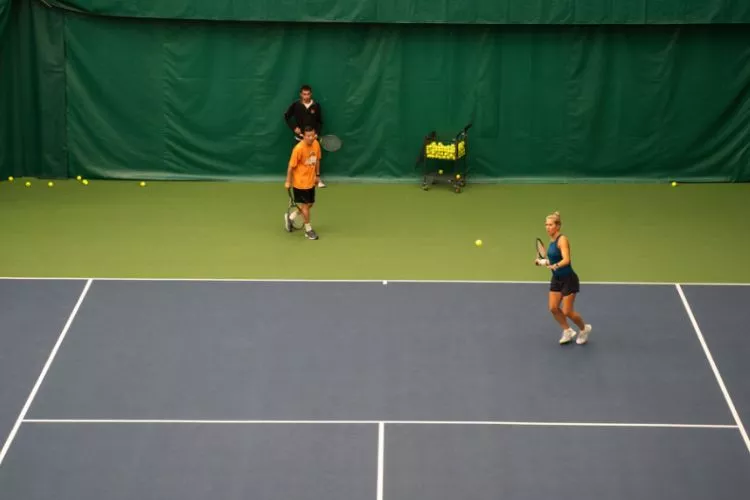
Offensive Footwork Techniques
When on the offensive, your goal is to create scoring opportunities by placing pressure on your opponents. Here are some footwork techniques that can boost your offensive tactics.
Quick Approach to the Kitchen Line
A swift approach to the kitchen (non-volley zone) line allows you to hit balls early and aggressively, making it difficult for your opponents to counterattack.
By using split-step, side-shuffle, and crossover step techniques, you can quickly cover the court and maintain an offensive position.
Closing in on Angles
When closing in on opponents at an angle, it’s essential that you employ proper diagonal footwork to maintain the advantage.
Utilize the crossover step to swiftly position yourself and negate your opponent’s potential shots.
Recovery and Anticipation
Successful offenses rely on anticipation and quick recovery from one shot to the next. Maintaining an active, ready stance and using split-steps ensures that you can react rapidly to incoming balls and capitalize on any weak returns from your opponents.
Defensive Footwork Techniques
Defensive strategies involve repositioning yourself and your partner to counter the opponent’s offensive moves effectively. Proper footwork techniques can help strengthen your defensive game.
Quick Retreat to the Baseline
In situations where you need to return powerful shots or lobs, retreating to the baseline is vital. Use the side-shuffle or crossover step to move efficiently, while also maintaining your balance.
Court Coverage and Mobility
Being able to cover a significant portion of the court is essential for effective defense. Employ ladder drills or cone drills to enhance your side-to-side mobility and foot speed. This will enable you to reach and efficiently return aggressive shots from your opponents.
Maintaining the Center Court Position
The center court position is a strategic position that allows you to cover most of the court, thus increasing your defensive capability.
Use the split-step and side-shuffle to return to the center court after hitting a shot. This will help neutralize your opponent’s offensive attacks.
By incorporating these footwork techniques into your offensive and defensive game strategies, you’ll improve your overall pickleball performance.
Remember that consistent practice and integrating footwork into your gameplay is critical to achieving success on the court.
Common Footwork Mistakes and Their Corrections
Pickleball players, particularly those just starting out, can often exhibit certain footwork mistakes that impede their game performance.
Understanding these errors and knowing how to correct them can greatly enhance your agility, placement, and striking power.
Here’s a rundown of common mistakes and their corresponding corrections.
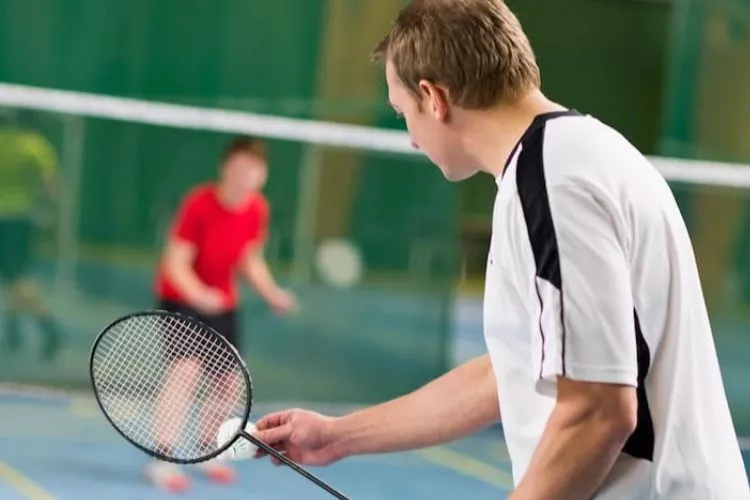
Mistake: Slow Reaction Times
Many players experience slow reaction times because they stand flat-footed on the court while waiting for the ball. This results in delayed movement and less time to position correctly for a shot.
Correction: Maintain an Active Ready Stance: Instead of waiting flat-footed, adopt an active ready stance. Stand on the balls of your feet with knees slightly bent, making it easier to initiate movement.
Make a small hop, known as a split-step, just as your opponent strikes the ball to facilitate swift, reactive, and balanced movement in any direction necessary.
Mistake: Overuse of Forward/Backward Movement
Players often default to running forward or backward to meet the ball, limiting their ability to control the direction of their shots and exposing them to angled shots from opponents.
Correction: Incorporate Lateral Movements: Lateral movements, like side-shuffling, enable players to cover the court more efficiently. By shuffling sideways, players can meet the ball at the optimal point while maintaining balance and court coverage, positioning themselves well for the next shot.
Mistake: Incorrect Positioning
Poor positioning, such as standing too close or too far from the ball, often results in weak shots or missed opportunities. It often happens when players focus too much on the ball and fail to adjust their position on the court promptly.
Correction: Incorporate Anticipatory Footwork: Work on improving your anticipatory skills. Track the ball and your opponent’s actions to predict where the ball will go.
Move in response as soon as your opponent’s paddle strikes the ball, utilizing footwork techniques like the split-step and crossover step to position yourself correctly.
Mistake: Poor Recovery
After striking the ball, some players take their time to recover and prepare for the next shot. This often leaves them out of position, making them vulnerable to the opponent’s counterattacks.
Correction: Optimize Recovery Footwork: After you hit a shot, use the split-step and side-shuffle to swiftly get back into position, preferably in the center of the court. This enables you to cover a range of shots, giving you more control over the game.
Improving footwork in pickleball is a process of continuous learning and practice. By recognizing and correcting these common mistakes, you can enhance your footwork, complement your playing strategy, and significantly up your game.
Conclusion:
Mastering footwork in pickleball is a cornerstone to elevate your overall performance. From choosing the suitable footwear to applying specific footwork strategies in offensive and defensive play, every aspect contributes to your success on the court.
Remember to avoid common footwork mistakes and involve anticipatory skills during gameplay for optimal positioning.
Regular practice, patience, and consistency are keys to enhancing your footwork skills. With time and effort, these refined movements will become second nature, paving the way to becoming a more proficient pickleball player.

Pickleball’s more than a game to me—it’s a passion. I write, sharing its highs and lows, the thrills and the lessons. Some tales might draw you to the court, while others give a hint of the game’s magic. So, curious about my journey? Ready to dive deep into the world of pickleball with me? Let’s go.
